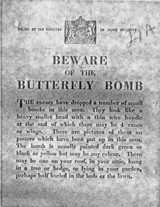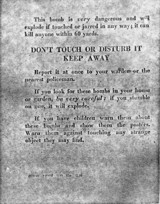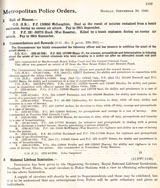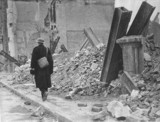Worksheet: The Blitz: After the Raid
Using the documents shown below:
| There was always the danger that the enemy may have dropped small booby-trap butterfly bombs. These notices warn the public to be on their guard. |  |
 |
| [Metropolitan Police Orders 30th September 1940] |  |
Click on any image for a larger view. |
The students might be asked to consider what it was like for a policeman patrolling his beat on foot after a raid – buildings were flattened; people that they knew were dead or injured; there could be unexploded bombs and even booby-trap butterfly bombs.
They also had to continue with their ordinary tasks of pursuing criminals of different types, from those who stole bicycles to more serious burglars; and they had to make sure that other people behaved in accordance with the law and other regulations (e.g. street collections – additionally it might be worth asking the students why lifeboatmen were necessary off the coasts in wartime).
More questions:
Preface
Introduction
Police & WWII
County Chief Constable
A Volunteer
Modern Echoes
Resources
Acknowledgements
